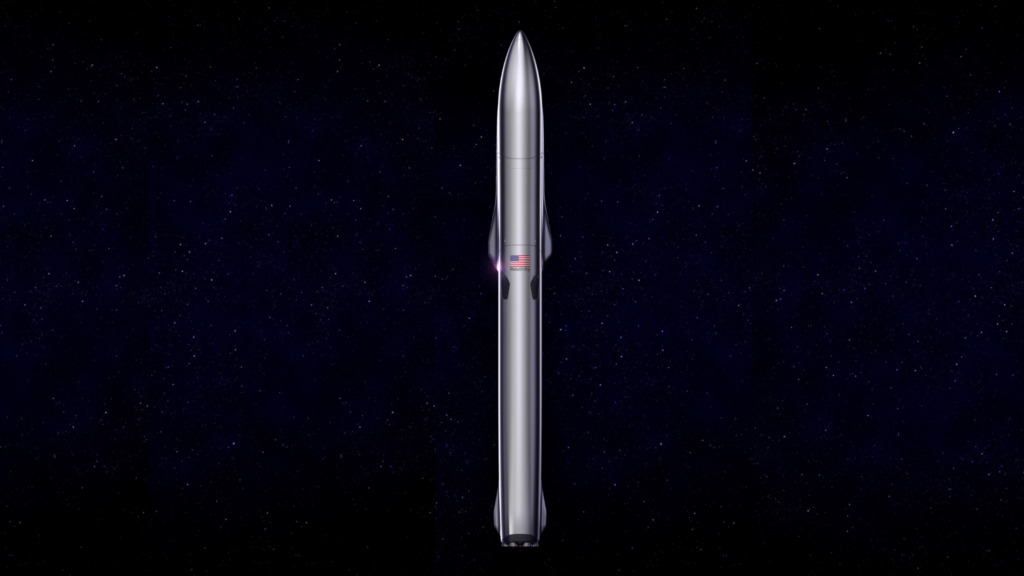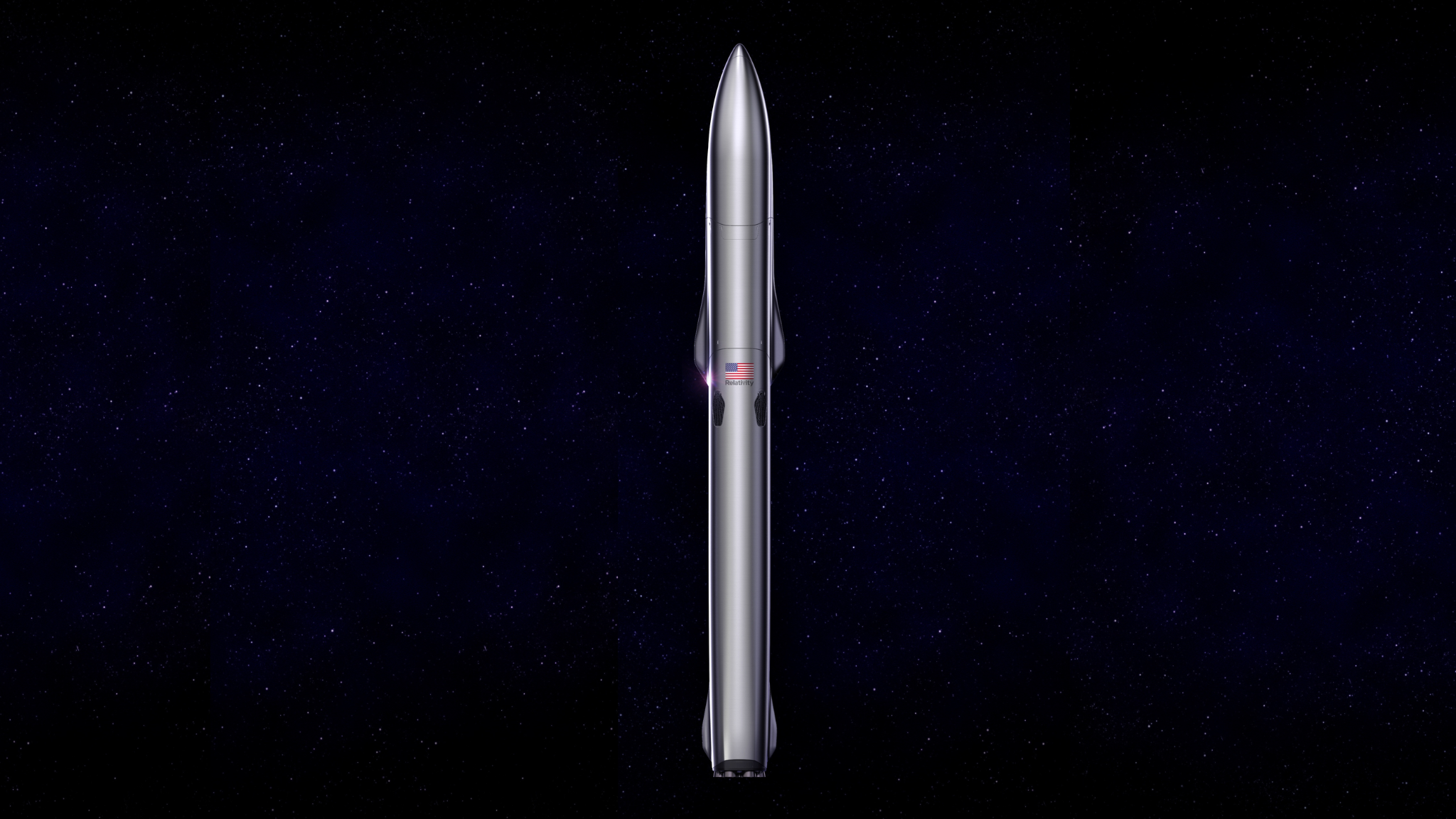
Relativity Space’s 3D-Printed Terran R Rocket Is Making Progress
More and more companies within the space industry are trying new and ambitious ideas in order to lower launch costs and increase launch cadence. Relativity Space is a great example as they continue to work on unique launch vehicles using a completely reinvented manufacturing process. While never done before Relativity believes that 3D printing is the future of aerospace manufacturing.
Even though the company is only weeks away from the first launch of Terran 1, Relativity has released even more updates on Terran R. This fully reusable and fully 3D printed rocket is trying to launch at a fraction of what other launch vehicles within the industry cost. However, in order for this innovative idea to become a reality, Relativity has been hard at work on different key components including a next generation rocket engine.
Over the last couple of days, CEO of Relativity Tim Ellis shared more progress on Aeon R and why it’s so important. Combine this with new 3D printers and a maiden Terran 1 flight around the corner, and it’s clear the company is making some significant progress. Here I will go more in-depth into the recent Terran R updates, why this launch vehicle is so unique, how Relativity plans to manufacture it, and more.
Terran R Update

A rocket engine is both an immensely complex and important component of next generation launch vehicles. For a few weeks now, Relativity has been focusing on the Aeon R engine which Terran R will rely on. Starting December 6th, Tim Ellis tweeted saying, “Aeon R igniter testing below. Plus continued full scale gas generator testing yesterday, and our full scale Aeon R main combustion chamber is now on test stand. Feeling closer every day to first thrust chamber assembly hotfire test, progress is rapid!” He also highlighted, “Can’t wait to see what 268,000 pounds of thrust looks and feels like.” These tweets included an image of the igniter being tested at the company’s test stand.
Relativity currently is working on an entire family of engines. This includes Aeon 1, Aeon R, and Aeon Vac, all of which are 3D-printed, with the goal of enhancing mission reliability by reducing part count in engine combustion chambers, igniters, turbopumps, reaction control thrusters, and vehicle pressurization systems. While Terran 1’s Aeon 1 engines are not very big, the same cannot be said for Aeon R. To get a better idea of their size, we can look at another tweet from Tim Ellis back in August of this year. Here he mentioned, “250,000+ pounds thrust 3D printed Aeon R chamber – newest iteration. Development pace increasing and lots more hardware showing up at @relativityspace. Gonna be a beast of an engine.” This included an image of the scale test engine model next to a few people.
All Aeon engines use propellants of the future, liquid oxygen + liquid natural gas, which are not only one of the best for rocket propulsion, but also the easiest to eventually make on Mars, a future goal of Relativity. As far as testing, to date, Aeon has completed 500+ test fires. Some of which happened just days ago. Specifically, on December 9th, Relativity Space tweeted pointing out, “Big things happening at Stennis this week too! Aeon R Gas Generator lit up the night, going full power for the first time.” This included a short video of this process as the company continues to make impressive progress.
In total, Terran R will utilize 7 of these Aeon engines on the first stage and a single Aeon Vac on the upper stage. Relativity’s Aeon engines are designed, assembled, and tested in house. For example, with the exception of the second-stage nozzle extension, each of Terran 1’s 10 engines is based on a common design, helping enable simplified and repeatable manufacturing and acceptance testing. Each engine uses two turbopump assemblies for thrust and mixture ratio control: one for liquid natural gas and one for liquid oxygen. The thrust chamber is regeneratively cooled with liquid natural gas, which is then injected into the main combustion chamber and burned with liquid oxygen to produce the required thrust. In the coming months, we can expect to see more progress on these engines and their application to the Terran R launch vehicle.
Manufacturing Process

Now that we know more about some of the progress on Terran R’s engines, we can take a closer look at the vehicle itself and the manufacturing process behind it. Created in Relativity’s Factory of the Future, Terran R is fully reusable including its engines, first stage, second stage, and payload fairing, and will be capable of launching over 20,000kg to low Earth orbit (LEO) in a reusable configuration. Currently, the company is still confident Terran R will launch from Cape Canaveral, starting in 2024.
In terms of its design, Relativity points out that Terran R has unique aerodynamic features with algorithmically generated and optimized structures. Relativity’s proprietary 3D printing process is enabled by software and data-driven manufacturing, exotic 3D printed materials, and unique design geometries that are not possible with traditional manufacturing, driving a faster rate of compounding progress and iteration in the industry. They also highlight that different aspects of the rocket including its grid fins were inspired by nature. Terran R is intended to provide both commercial and government customers affordable access to space, in LEO and beyond. In other words, Terran R is hoping to accommodate the company’s growing pipeline of commercial interest and eventually offer customers a point-to-point space freighter capable of missions between the Earth, Moon, and Mars.
By fusing 3D printing, artificial intelligence, and autonomous robotics, Relativity is printing its rockets’ structure and engines, significantly reducing touch points and lead times, simplifying the supply chain, and increasing overall system reliability. Just over a month ago, we learned more about the new generation of printers designed for this specific rocket. Most immediately, this new generation of printers will serve as the primary manufacturing infrastructure for Terran R production. The majority of Terran R components will be printed inside Relativity’s new 1MM+ square foot headquarters in Long Beach, named The Wormhole. Aeon R engines, for Terran R, will continue to be produced at the company’s other Long Beach factory, The Portal. The Wormhole, a former Boeing C-17 manufacturing plant, was secured by Relativity to be its new headquarters in 2021. Currently 33% operational, the factory has several new Stargate printers online with more than a dozen printers planned to be producing Terran R components in the coming months. At the full capacity forecasted run rate, Relativity believes each of these printers is capable of producing 4 Terran R rockets per year. The remainder of The Wormhole will continue to be built out in phases, bringing more printers online and moving more teams into the company’s headquarters as production for Terran R scales.
“Large-scale products that are designed to fly will inevitably be 3D printed,” said Tim Ellis, cofounder and CEO of Relativity Space. “The lighter a product is, the better it performs, and when 3D printing that product, it’s also faster and more cost-effective to produce with each successive improvement. The compounding rate of progress is high, and we are still in the early days of what printing can achieve. We see 3D printing as an automation technology that has the power to change the pace of innovation in manufacturing, which is why we’ve invested in building our own proprietary tech stack from day one. Stargate printers are designed to unlock rapid iteration, which opens up opportunities for innovation in large-scale manufacturing products. What would take traditional aerospace and space manufacturers years to develop and build, will be reduced down to months due to a highly adaptable, scalable, and automated process, made possible through software-driven manufacturing.”
It’s important to point out that even though Terran R is still in the early stages of development, it already has secured some significant contracts. Back in June of this year, Relativity announced that it had signed a multi-year, multi-launch Launch Services Agreement with OneWeb, a global space-based communications company. Under the agreement, Relativity will launch OneWeb’s low Earth orbit (LEO) satellites on Terran R, starting in 2025. These launches will support OneWeb’s deployment of its Gen 2 satellite network, which will add capacity and fresh capabilities to build upon the initial constellation of 648 satellites the company is currently building out. Terran R will launch OneWeb missions from Launch Complex 16, Relativity’s site at Cape Canaveral Space Force Station. With the addition of this multi-launch agreement with OneWeb, Relativity now has a total of five signed customers for Terran R, including multiple launches totaling more than $1.2B in backlog.
Conclusion
Relativity Space has its hands full with Terran 1’s first launch only weeks away and Terran R development and testing underway. In the last few days alone we have seen an increase in updates from the company regarding this next generation launch vehicles engines, Aeon R. Not to mention, more progress on this rocket’s new 3D printers and various infrastructure supporting the future of Terran R. We will have to wait and see how it progresses and the impact it has on the space industry.
